Wildlife Trade Convention makes steady progress in facing global biodiversity challenges
The 19th meeting of the Conference of the Parties to the Convention on International Trade in Endangered Species of Fauna and Flora (CITES CoP19) in Panama ended last week.
“CITES Parties adopted a series of decisions to regulate trade in a number of commercially important wild species, led by marine and timber species, and made important progress in tackling the global biodiversity crisis,” according to Richard Scobey, Executive Director of TRAFFIC. “These actions build momentum for completion of the Post-2020 Global Biodiversity Framework to be finalised in Montreal next month.”
The illegal trade in endangered species such as elephants and rhinos dominated many discussions, and proposals that risked re-opening international trade in these species failed to gain the support of the majority of governments. Parties also agreed to a review of the CITES National Ivory Action Plan process - a crucial mechanism by which CITES commitments made by governments are translated to effective action on the ground.
A similar review of the Elephant Trade Information System (ETIS) managed by TRAFFIC for CITES and Parties was reviewed and endorsed at the CoP19. The study concluded that the ETIS analysis is data-driven and quantitative at its core, and TRAFFIC is objective in its use of available data, the analytical approach and reporting.
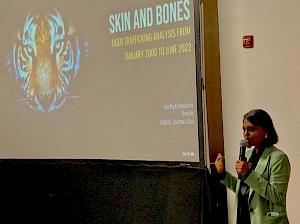
Big cats also received significant attention, with governments renewing Decisions calling for CITES missions to be undertaken in countries with captive breeding facilities for Asian big cats, which may be of concern. "These missions should be prioritised, given the findings of a recent TRAFFIC report that 81% and 67% of seized tigers in some countries are suspected or confirmed to involve captive-sourced tigers," said Sabri Zain, TRAFFIC’s Director of Policy.
Throughout the CoP, but especially related to big cats’ items, there was a resounding call to end consumer use and heighten supply chain stakeholders’ awareness of illegal wildlife trade through behaviour change communications. Positively, Parties adopted new guidance developed by TRAFFIC on demand-reduction strategies to combat trade in CITES-listed species.
The crucial role that CITES plays in regulating trade in commercially significant marine species was highlighted when Parties at the CoP19 supported all proposals to list a variety of these species in Appendix II of the Convention, including 104 shark and ray species consisting of Hammerhead sharks, Guitarfish and Requiem sharks, like the Blue shark, and three Indo-Pacific sea cucumbers.
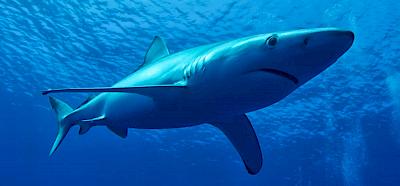
These international trade measures will strengthen national measures for the species involved and, in some cases, complement existing regional fisheries management measures already in place,"
Glenn Sant, TRAFFIC’s Senior Advisor – Fisheries TradeSant continued: “Also, Decisions were adopted to help Parties identify where there were existing implementation challenges for listed sharks and rays, specifically noting the findings of TRAFFIC's review Missing Sharks, and directing the Parties to find solutions.”
Around 150 timber-producing tree species from Central and South America and Africa, including Cumaru Dipteryix spp., African mahogany Afzelia spp. and Khaya spp., Trumpet trees Handroanthus spp., Roseodendron spp., and Tabebuia spp. and other species were listed in Appendix II with amendments to the original proposals made during the discussions with due consideration of livelihoods (i.e., Cumaru). They will further assist with the legal and sustainable management of the wild populations and wider ecosystems.
Medicinal Rhodiola species, used as an ingredient in many food and health products, including a Chinese medicinal formulation supporting COVID-19 treatments, have also been included in Appendix II. Adopting the Medicinal and Aromatic Plants agenda item strengthens the foundation for steps to ensure the legal and sustainable trade in these critical species.
Tools and strategic approaches co-developed by TRAFFIC, including 9-steps NDF Guidance for timber and perennial plants, WildCheck, and the Options for Managing and Tracing Wild Animal Trade Chains to Reduce Zoonotic Risk, were among those showcased to assist Parties with the implementation of the CITES regulations including specific Resolutions and CoP Decisions.
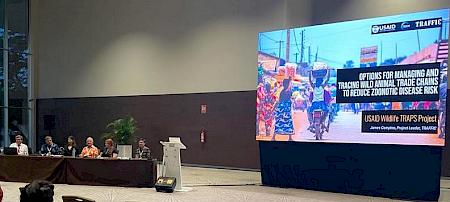
Parties adopted a series of Decisions that sought to identify the potential role CITES measures could play in reducing the risk of future zoonotic disease emergence linked to wildlife trade.
These Decisions will strengthen not only practical collaboration between CITES and relevant international organisations but also provide guidance for action at the national level, including stronger coordination between wildlife trade management authorities with their animal and public health counterparts."
James Compton, TRAFFIC’s Wildlife TRAPS Project Lead
Steady progress was also made on cross-cutting strategic issues. The CoP19 also adopted a series of new Decisions encouraging Parties to ensure policies and strategies are in place to address corruption risks and associated illicit financial flows of wildlife crime. "TRAFFIC is keen to assist Parties in its effective implementation, and with partners, we’ve already produced guides to identifying corruption risks along wildlife, forestry and fisheries supply chains and an e-Course on engaging the financial sector to reduce money-laundering and corruption linked to wildlife trade," noted Gabriel Sipos, TRAFFIC’s Anti-Corruption Coordinator.
However, progress was limited on discussions related to engagement with indigenous peoples and local communities (IPLCs), as well as pathways to maximise the benefits these communities derive from legal and sustainable trade in wild species for their livelihoods. While Parties agreed that CITES Working Groups examining these issues continue their work, they expressed very divergent views on these issues, with some governments questioning their direct relevance with the effective implementation of the Convention.
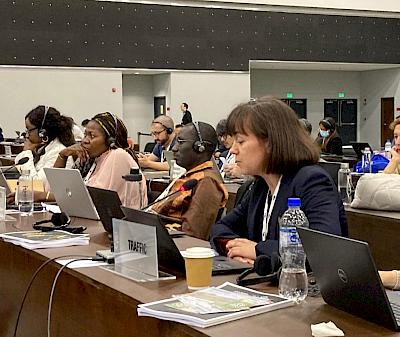
"Sustainable use of wild species is central to the identity and existence of many indigenous peoples and local communities and often makes a vital contribution to their conservation," said Anastasiya Timoshyna, TRAFFIC’s Director of Strategy, Programme, and Impact.
We urge that work on this issue moves forward with a renewed sense of urgency that reflects the critical role that IPLCs play not only in the effective implementation of CITES but also in helping governments meet their targets for many of the UN Sustainable Development Goals."
Anastasiya Timoshyna, TRAFFIC’s Director of Strategy, Programme, and ImpactThe CoP19 agreed to many Decisions that will bolster the goals, targets and indicators of the Post-2020 Global Biodiversity Framework that will be negotiated in Montreal next month. “If CITES is to make a real and tangible contribution to the achievement of these targets and indicators, it must address the issue of the wider socio-economic context of trade in wild species of fauna and flora, including on livelihoods of those living with and depending on wild species, in a serious and comprehensive manner,” noted Melanie Heath, TRAFFIC's Senior Director – Global Programme Office.
A selection of images from the event
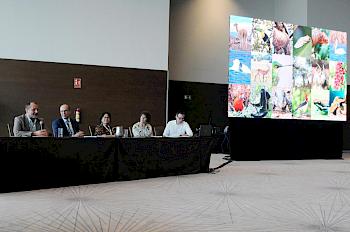 Photo by IISD/ENB | Diego Noguera |  Photo by IISD/ENB | Diego Noguera | 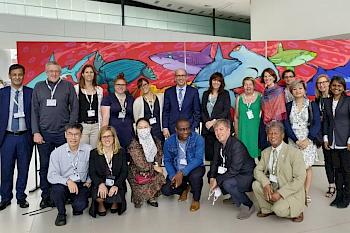 Photo by TRAFFIC |
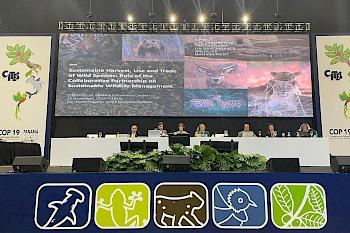 Photo by TRAFFIC | 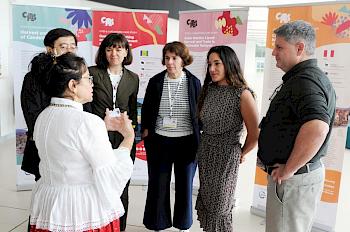 Photo by IISD/ENB | Diego Noguera | 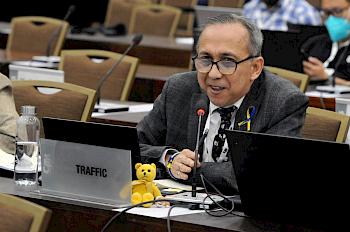 Photo by IISD/ENB | Diego Noguera |
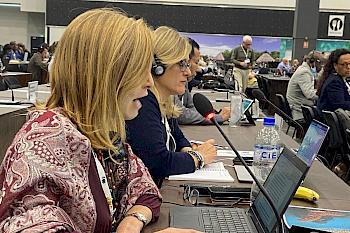 Photo by TRAFFIC | 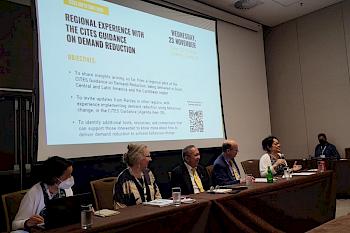 Photo by TRAFFIC | 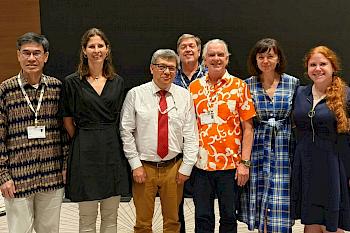 Photo by TRAFFIC |
Convention on International Trade in Endangered Species of Wild Fauna and Flora (CITES)

The Convention on International Trade in Endangered Species of Wild Fauna and Flora, is an international agreement between governments that aims to ensure that international trade in specimens of wild animals and plants does not threaten their survival. Find out more here.




